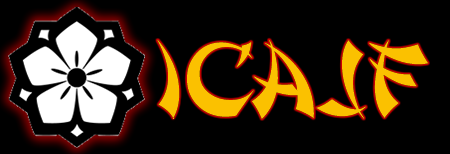Numbers
Ichi – ee-chee one 1
Ni – nee two 2
San – sahn three 3
Shi – she four 4
Yon – yhon four/fourth 4 or 4th
Go – goh five 5
Roku – roh-koo six 6
Shichi – shih-chee seven 7
Nana – nah-nah seven/seventh 7 or 7th
Hachi – ha-chee eight 8
Ku – kooh nine 9
Ju – jew ten 10
Basic Commands
Shomen ni rei – sho-men nee ray Bow to the “high” or shrine side of the Dojo
Sensei ni rei – sen-say nee ray Bow to the Teacher
Shihan ni rei – she-hon nee ray Bow to the Master
Yudansha ni rei – you-dahn-shah nee ray Bow to the Black Belts
Sempai ni rei – sem-pie nee ray Bow to the Senior Student
Hajime – hah-jih-may Begin/Start
Yame – yah-may Stop/Hault
Mate – mah-tay Wait/Pause
Black Belt Ranks
Shodan – sho-dohn 1st Degree Black Belt
Nidan – nee-dohn 2nd Degree Black Belt
Sandan – sahn-dohn 3rd Degree Black Belt
Yondan – yhon-dohn 4th Degree Black Belt
Godan – goh-dohn 5th Degree Black belt
Rokudan – roh-koo-dohn 6th Degree Black Belt
Shichidan – she-chee-dohn 7th Degree Black Belt
Hachidan – hah-chee-dohn 8th Degree Black Belt
Kudan – kooh-dohn 9th Degree Black Belt
Judan – jew-dohn 10th Degree Black Belt
Martial Arts Titles
Sempai – sem-pie senior student
Shidoshi – sheh-doh-she an instructor or guide
Sensei – sen-say a teacher
Fuku-Shihan – foo-koo sheh-hon assistant instructor (assistant to the chief instructor)
Renshi – rhen-she a polished instructor
Shihan – she-hon chief instructor; model teacher
Kyoshi – kee-oh-she senior instructor/professor
Kaiso – khiee-sooh the founder of a martial system or organization
Kaicho – khiee-choh the president of a martial arts organization
Fuku-Kaicho – foo-koo khiee-choh the vice president of a martial arts organization
Dojo Cho – doh-joh choh the director of a local dojo or training hall
Hanshi – hon-she The “han” is the same, meaning an example, model or pattern. The “shi” in shihan means teacher or master. The “shi” that’s used in hanshi means (gentle)man, samurai or warrior, or scholar.
Soke – soh-kay an inheritor of a system of martial arts
Soke Dai – soh-kay-diee an inheritor of a system of martial arts ranking 8th Dan or higher
Sho Dai Soke – sho-diee-soh-kay the first generation inheritor of a system of martial arts
Ni Dai Soke – nee-diee-soh-kay the second-generation inheritor of a system of martial arts (usually the first heir to Sho Dai Soke)
Basic Terminology
Atemi – ah-tem-mee Striking to vital points
Tsuki – zooh-kee Punching
Geri – gerh-ee Kicking
Nage – nah-geh Throwing
Barai – bar-iee Sweeping
Uke – ooh-kay Blocking; also the person who initiates the attack and receives the technique
Tori – toe-ree the person who receives the attack and initiates the technique
Jujutsu – jew-jhut-soo a compound word consisting of two elements “Ju” meaning gentle or yielding and “Jutsu” meaning art; an unarmed form of Martial Art utilizing blocking, kicking, punching, striking, throwing, grappling, joint-locking and strangulation/constriction techniques. Literally meaning “Gentle Art” or “Soft Art”; a form of Martial Arts founded in Japan by Samurai Warriors for the purpose of unarmed combat approximately 3000 years ago
Aiki – iee-kee the philosophy, art and application of ones internal energy or life essence; Literally meaning “Harmony of Spirit” also harmony of energy and nature, a blending of energy
Nihon – nee-han Japan/Japanese
Ryu – ree-ooh a method, philosophy or school of thought and/or application
Taigawa-ryu Jujitsu – ty-ga-wa ree-ooh jew-jhutsu Great river school of the gentle art
Nihon-ryu Goshin-jutsu – nee-han ree-ooh goh-shin jhut-soo Japanese methods of Self-Defense
Sentou – sen-toh combat, battle
Sentou-ryu Aikijujutsu – sen-toh ree-ooh iee-kee jew-jhut-soo Combat school/method of blending/harmonizing energy gentle/soft art
Karate – kah-rah-tay a compound word consisting of two elements “Kara” meaning empty or open and “Te” meaning hand; a form of Martial Arts founded in Japan approximately 300 – 400 years ago consisting of kicking, punching, blocking and kata (forms)
Kiai – kee-iee spirit yell, also spirit wind; the shout expelled when delivering a strike or technique
Kata – kah-tah prearranged sequence of movement; a form; a sequence of movements emulating combatant techniques
Dan – dohn a Black Belt grade rank ranging from 1st – 10th degree
Yudansha – yoo-dohn-shah members holding Black Belt ranks (collectively)
Mudansha – moo-dohn-shah members holding Kyu grade/Color Belt ranks (collectively)
Kyu – keew a student grade rank ranging from 10th – 1st level
Menkyo – mhen-kee-oh a certificate of teaching authority ranging from Shoden (basic), Chuden (intermediate), Okuden (advanced) level transmission as well as “Menkyo Kaiden,” which is a teaching certificate of full proficiency in the art
Dojo – doh-joh a hall used for training; Literally, “the place of the way”
Migi – mih-ghee to the right or right side
Hidari – hih-dar-ee to the left or left side
Ushiro – oo-shih-roh back-side or backward
Jodan – joh-dohn high or upper level
Chudan – chew-dohn middle or mid range level
Gedan – ghee-dohn low or low range level
Kai – khiee an association or organization
Goshin – goh-shin self-defense and/or personal protection
Waza – wah-zah technique or application of technique
Kansetsu – khan-set-soo joint locking
Othoshi – oh-toe-she a form of throwing or dropping
Nage – nah-geh a form of throwing; throwing techniques (i.e. Nage Waza)
Gari – ghar-rhee a form of sweeping
Taisabaki – tie sah bah-kee body rotation, pivoting and movement
Shime – shih-meh strangulation and constriction
Gatame – gah-tah-meh grappling
Kyusho – kee-oo-shoh pressure points
Ukemi – ooh-kem-ee safety procedures; the art of falling correctly, so as to not obtain severe injury
Tobi – toh-bee jumping (i.e. Mae Tobi Geri – jumping front kick)
Empi – ehm-pee elbow (i.e. Empi Uchi – elbow strike)
Hiza – hih-zah knee (i.e. Hiza Geri – knee kick)
Te – tay hand
Hazushi – hah-zoo-shih to release (i.e. Hazushi-Te – to release hand)
Niguru – nih-ghu-rooh yielding (i.e. Kakato Niguru – single hand grab yielding method)

